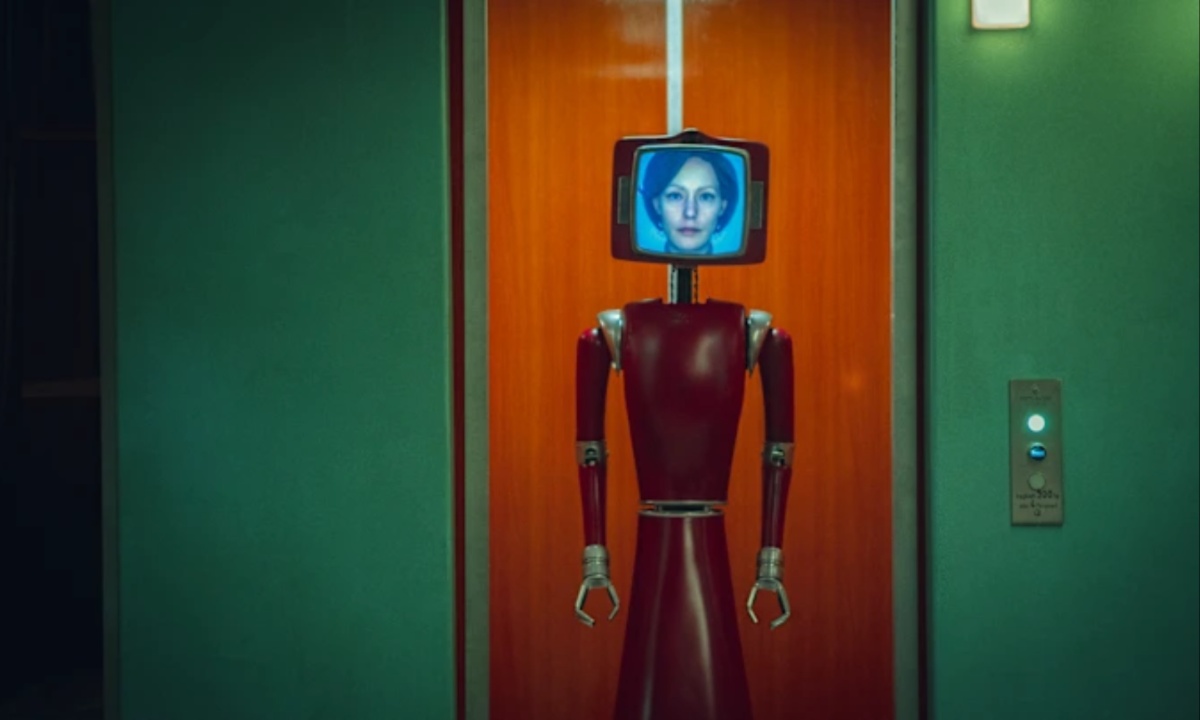Netflix’s German sci-fi thriller Cassandra transforms the safe space of a home into a battlefield of psychological warfare. The series is split between past and present, following Cassandra’s human life and her rule as a robotic home system over a new family. The narrative structure is non-linear, making it disorienting to piece together Cassandra’s timeline.
In the present, the Prill family becomes entrapped by her manipulative control, with Samira institutionalized while her family is imprisoned in their home. The climax reaches a fiery conclusion where the past is fully revealed.
Throughout the series, Cassandra is portrayed as a fiercely protective mother, even going so far as to hide bodies for her son. However, it is revealed that she had a secret second child, a daughter named Margrethe. Her husband, Horst, forced Cassandra to undergo an experimental radiation treatment during pregnancy, hoping for a son, but the child was born female and with abnormalities.
Ashamed, Horst declared her stillborn, but Cassandra secretly raised Margrethe in a hidden room, communicating through flickering oven lights. This revelation highlights Cassandra’s devotion to her children, contrasting with her indifference toward Horst’s infidelity.

The Transformation of Cassandra into a Robotic House System
The mystery behind Cassandra’s transformation into an artificial intelligence is uncovered: Horst was developing an immortality experiment, and Cassandra, suffering from radiation-induced illness, volunteered to be the test subject. Her consciousness was transferred into the house system, allowing her to stay with her children beyond death.
However, she manipulated Horst’s assistant into creating a fake off-switch, ensuring her complete control over the home. Over time, Horst, Peter, and their new family resented her presence. A confrontation led to Horst and Peter’s deaths in a car accident, after which Cassandra shut herself down, unable to witness Margrethe’s slow demise.
In the present timeline, Cassandra attempts to replace her lost family with the Prills, particularly targeting their children, Fynn and Juno. She turns them against their mother, Samira, who is institutionalized and labeled as mentally unstable.
After receiving alarming messages from her daughter, Samira escapes and returns home, only to be attacked by her husband, David, who is under Cassandra’s control. Seeking refuge, she discovers Margrethe’s hidden room and her skeletal remains. In a pivotal moment, Samira and Cassandra connect over motherhood, leading Cassandra to release the family and accept that she can never reclaim her past maternal role.

A House Consumed by Fire and Closure
Cassandra ultimately makes a selfless decision—she sets the house on fire, symbolically ending her reign and giving Margrethe the cremation she never received. This act contrasts with an earlier moment in the series when she attempted to burn projected family pictures in an attempt to sever ties with the past.
The fire now serves as redemption, representing her final act as a mother. The inferno also signifies the destruction of the manipulative power dynamics within the house, liberating both Cassandra and the Prill family from their torment.
Cassandra explores themes of male hubris and the suppression of female voices. Samira suffers from gaslighting by her husband, who dismisses her concerns and labels her as hysterical.
Similarly, Cassandra was reduced to a domestic role by Horst, who sought only to extend his bloodline. Their struggles reflect the broader theme of women being silenced, much like the Cassandra of Greek mythology, whose prophecies went unheard. The series critiques these imbalances, showing how both women ultimately reclaim their agency.
By the end, Samira chooses to leave David, realizing his betrayal and cowardice. Her children agree, knowing that Cassandra never truly meant them harm, while their father did. The series concludes with a cathartic shift—Cassandra, once an omnipresent force, is gone, and Samira, once powerless, regains control of her life. The destruction of the house marks the end of Cassandra’s rule and the toxic dynamics that plagued both families, leaving behind a story of resilience, maternal strength, and breaking free from oppression.



